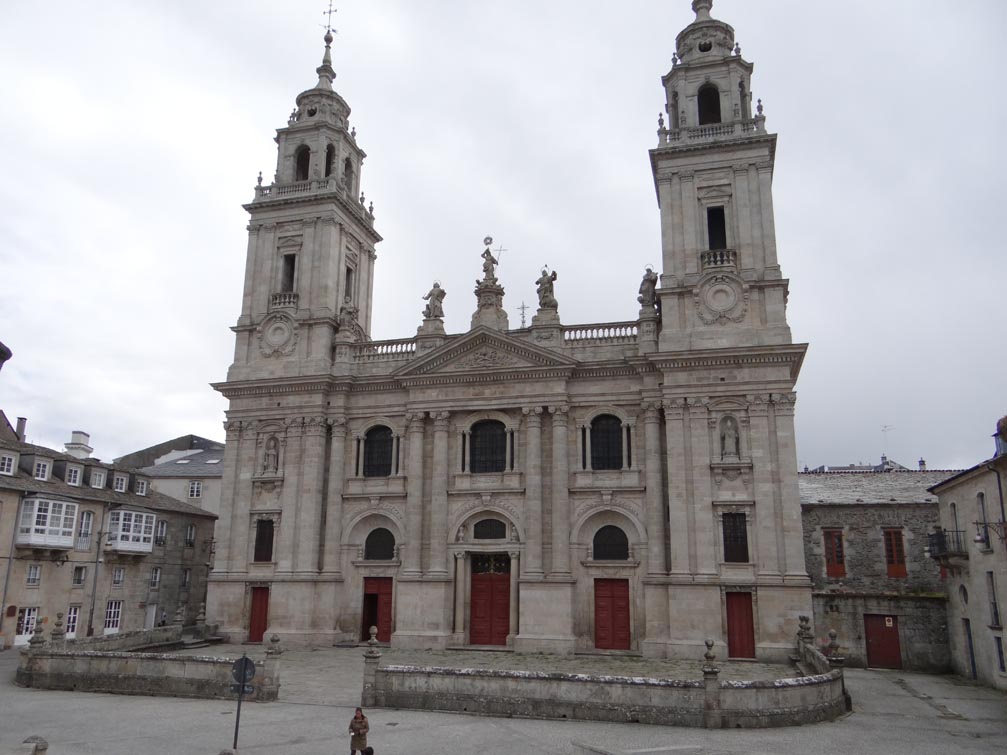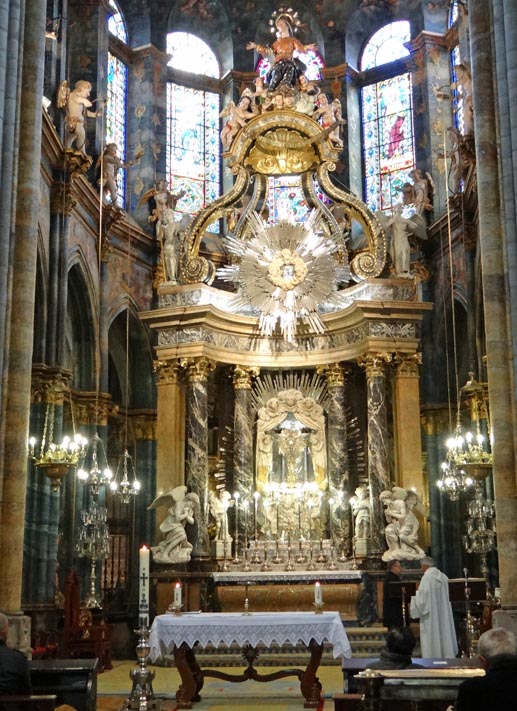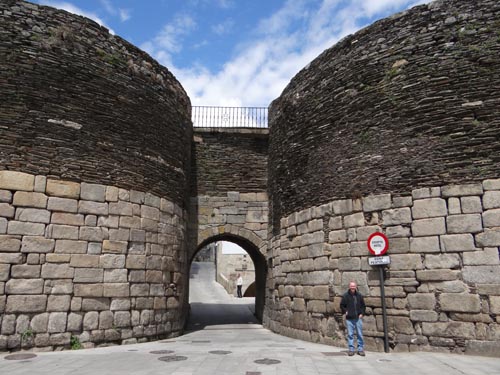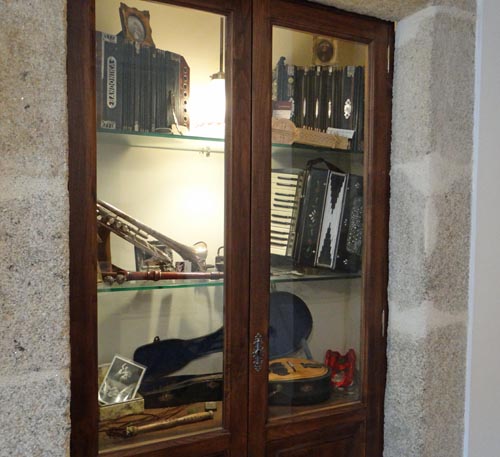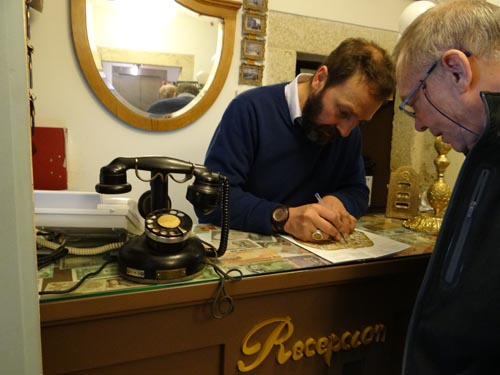|
|
||||||||
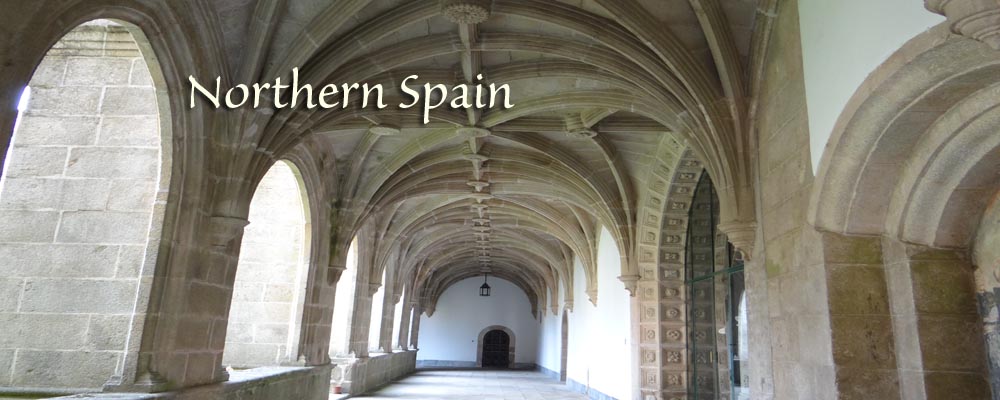 |
||||||||
|
Links: to Spain, by way of Windsor: 02 Rally Finish Onto Spain: 05 onto Leon 06 Astorga 08 to El Acebo
|
||||||||
|
Lugo, Galicia, Spain, 25 May, Sunday
When we were last here at year ago, we didn't give Lugo the
attention it deserved. To us, it was simply a place to drop
off a rental car before starting our first attempt at the Camino de
Santiago. Only later, did I read that this large town in
northern Spain had the only surviving complete Roman wall
surrounding the old town area. As expected, the town's Cathedral is a dominating feature. This one is a bit different. It appears to have a separate chapel erected half way down the nave, blocking off the view of the main altar from the entrance. So, when you enter, it's a very gloomy 13th century stone building, an impression that's shattered when you walk past this visual obstruction . The main altar is a brilliant flash of light, with candles and metallic ornamentation, all designed to stun the eyes, and focus on the central feature, a huge monstrance. Lugo's cathedral has had, by Papal decree, a devotion known as "Perpetual Exposition", so believers can worship at any time of night or day - and indeed, there is supposed to be someone in attendance there at all times Lugo is not on what is considered the main Camino route these days, but historically, what's called the "Primitive Camino" did go through here. Today's route originates from further east along the French border, and passes to the south of Lugo, but the city hangs on to its claim of being on the original Way of St James, and indeed many pilgrims still come this way. Dave is obviously missing the daily walking challenges – so we set out for a downhill walk to see the ruins of Roman Baths – and of course, there was an equivalent hill climb back up to our hotel. The Roman baths weren’t really worth it. The UK version in the city of Bath needn’t fear any competition from the Roman Baths at Lugo – but there was quite an attractive Roman bridge to see on the way. Our hotel is really rather quant… our room has a glass front cupboard containing miscellaneous musical instruments with one thing in common – they are all old. Needless to say, the cupboard is locked! Downstairs, at reception, a phone several decades old is resting on the bench , but hiding behind is a more modern instrument. I guess the old contraption is purely for show. And our bathroom – the sides of the bath are so steep and high I’m going to have to be extra careful not to trip and fall getting in or out. (By the way, after completing, without serious incident, our section of the Camino, what did I do at the hotel in Samos yesterday? Tripped up the stairs!. The hotel staff were very concerned. I had to reassure them that no, I hadn’t done myself any injury, except to my pride). |
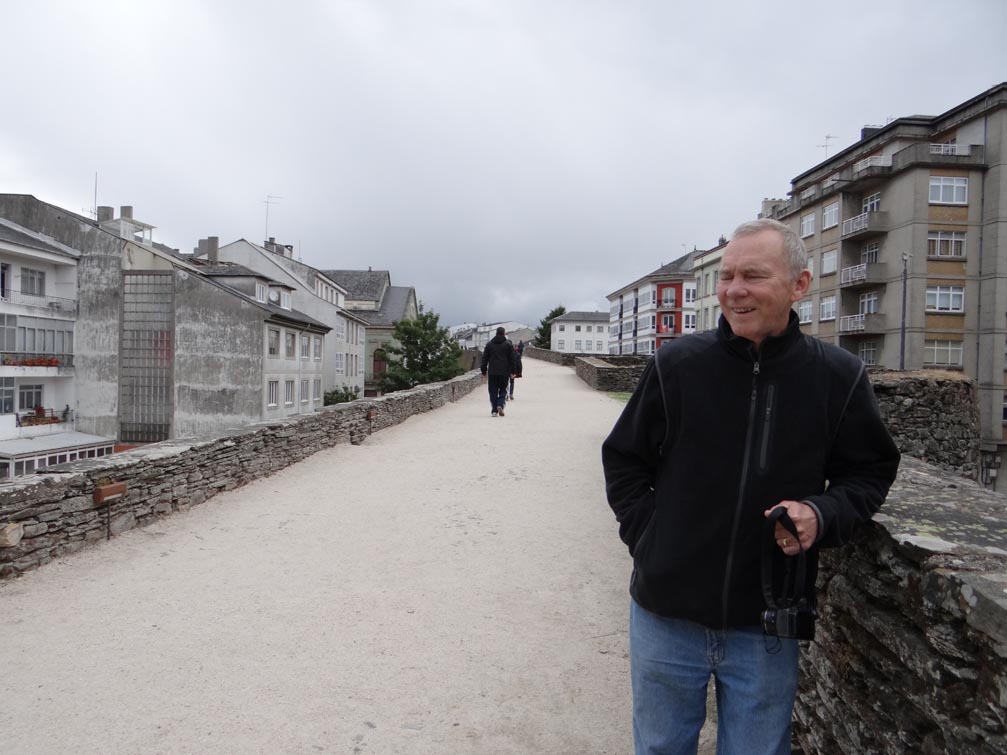
Next::: back on our own four wheels |
|||||||
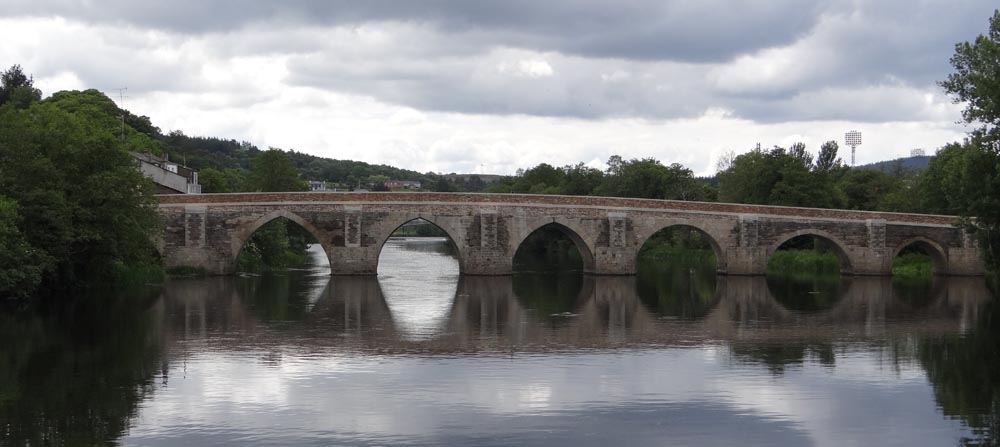 |
||||||||
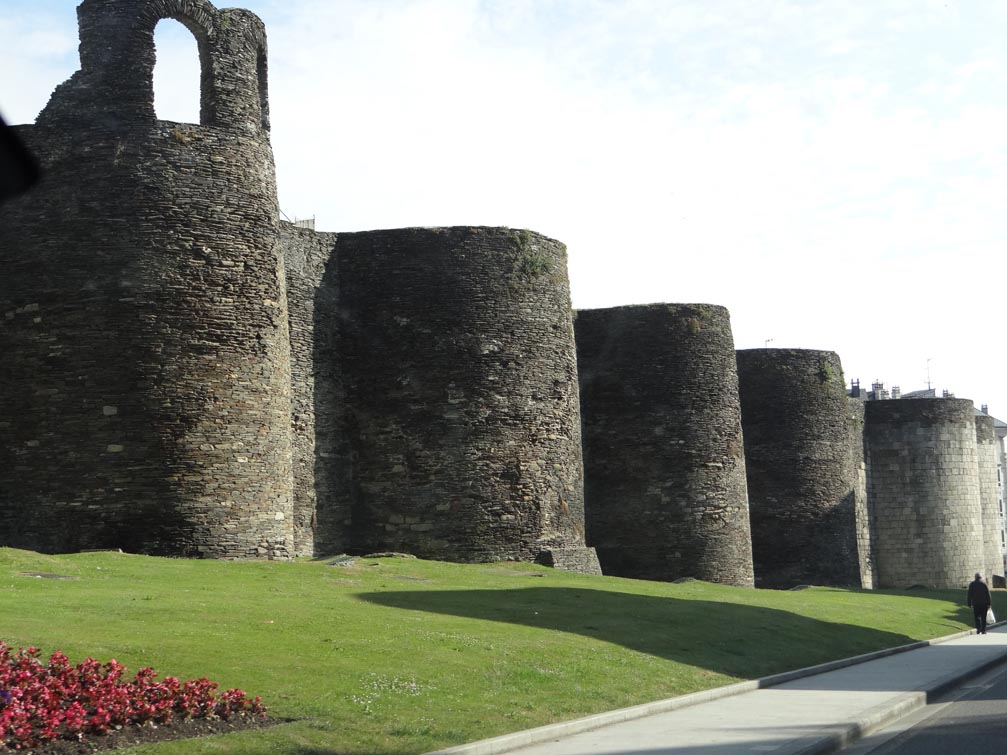 Below: the Roman wall around the Old Town can be seen quite clearly
here:
Below: the Roman wall around the Old Town can be seen quite clearly
here:
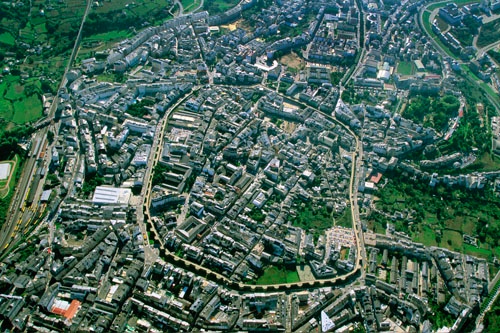 ,
So today, we walked around the ramparts, the wide path constructed
on top of the wall. It's an impressive structure, looping the
town with a 2.5km stone lasso. Our hotel is just inside one of
the original gates - gates have been added over the years, and some
older ones closed off. Although the wall is complete, and has
survived nearly two thousand centuries, some of the old towers built
on top of it are no longer here.
,
So today, we walked around the ramparts, the wide path constructed
on top of the wall. It's an impressive structure, looping the
town with a 2.5km stone lasso. Our hotel is just inside one of
the original gates - gates have been added over the years, and some
older ones closed off. Although the wall is complete, and has
survived nearly two thousand centuries, some of the old towers built
on top of it are no longer here.